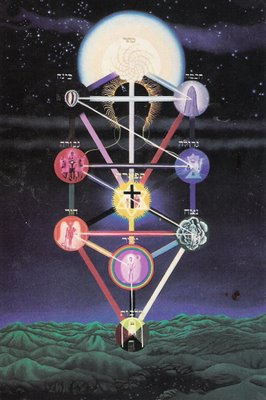
The Nigerian poet Christopher Okigbo describes his poetic sequence Labyrinths in the following way:
Labyrinths is … a fable of man’s perennial quest for fulfilment….a personage [ is assumed] much larger than Orpheus; one with a load of destiny on his head, rather like Gilgamesh, like Aeneas, like the hero of Melville’s Moby Dick, like the Fisher King of Eliot’s Waste Land; a personage for whom the progression through “Heavensgate” through “Distances” through Limits” is like telling the beads of a rosary; except that the beads are neither stone nor agate but globules of anguish strung together on memory.
The poem, stories and essays in this collection play a similar role. The poetry and stories were written between 1997 and 1998 but the essays, which are commentaries on the literary works, are being written in 2006. The poetry and stories operate as a springboard for autobiographical meditations, taking their inspiration from the distance travelled by the writer in the time spanned by the writing of both sections of the work.
A central theme that emerges from these contemplations is the question of home, understood in terms of the relationships between its domestic, psychological and metaphysical senses.The “beads” here through which the contemplation is carried out are represented by poetry and stories inspired by the Nigerian Yoruba Orisa tradition and the cosmography of the Jewish-Hermetic Kabbalah. The poem is informed by the Yoruba story of the journey of the deity Orisanla to visit his friend, the Orisa Sango at Oyo. He is warned by the Ifa oracle that he will encounter obstructions on his way but if he is to succeed in his journey, he is not to retaliate to any provocation he would encounter. He eventually arrives at Oyo and meets his friend, but after much tribulation.
The stories represent meditations on the cosmography of the Kabbalah, developed in Judaism and adapted by Western Hermeticism. The Kabbalah describes the cosmos in terms of ten interrelated centres and each story is a meditation on the characteristics ascribed to one of these centres. This work is particularly indebted to what is, as far as I know, an anonymous work of Kabbalistic poetry.The structure of the work is developed in terms of commentaries on the poetry and the stories. These commentaries are autobiographical. They use the associations evoked by the stories in exploring questions that emerge from the autobiographical itinerary of the writer, as this is understood in terms of its social, psychological and metaphysical possibilities.The commentaries, therefore, develop possibilities of interpreting the literary works that expand their cognitive range in directions not explicit in the texts. This interpretive mode could be related to the poetry and commentary of the Christian mystic St. John of the Cross which form a unified whole, and where the commentary develops the poetry in terms of realms of meaning significantly removed from the world ostensibly realized by the poems.
The parabolic fictions of Jorge Luis Borges and of Italo Calvino’s Invisible Cities have also been influential.In the background to this range of influences is the example of the Italian Dante Alighieri’s Commedia where the poet-protagonist undergoes a cognitive journey, taking stock of his life at mid-point against the background of a cosmic tapestry, a reassessment dramatised in the form of a passage through the cosmos.
Top: The cover of Dion Fortune's Mystical Qabalah.Maine:Weiser,1997 by Patricia Waldygo. It represents the Qabalistic notion of the cosmos as constituting the body of the cosmic man, Adam Kadmon. This visualisation of the cosmos is suggestive of the Qabalistic understanding of the universe as living entity that is given life and ultimate direction by the being of Ain Soph, the unmanifest zone beyond knowledge but which sustains all being. The mutuality of human and cosmic being is resented not only by the anthropomorphic character of this metaphor but by the understanding of the human being as a microcosm of the cosmos whose actions affect the sustenance or disruption of cosmic harmony. Adam Kadmon is understood as the cosmic exemplar of what the human being embodies in his own microcosmic level.
In relation to the autobiographical character of this text. the image of Adam Kadmon could be understood as representing both the potential and aspirations of myself and the distance between this aspiration, this potential and present reality.
The notion of distance between the ideal and the actuality of the moment arises in relation to the Kabbalitisc notion of disjunction in the being of Adam Kadmon, in which the most exalted levels of being, those represented by the channels of divine force symbolized by the head, are disjointed from those below on account of a rupture that occurred at creation. The vessels through which the divine light that streamed forth from the Unmanifest to configure existence proved too intense for the lower vessels to sustain and so they shattered into fragments. These fragments still contain, trapped within themselves, shards of the divine light the intensity of which led to their shattering. This coexistence in a confused conjunction of the divine sparks and their concrete envelopes represents the coexistence of positive and negative qualities that constitute our material universe. It is the duty of the Kabblalist to separate the sparks from their material sheets so they may ascend to their transcendental realm.


0 Comments:
Post a Comment
<< Home